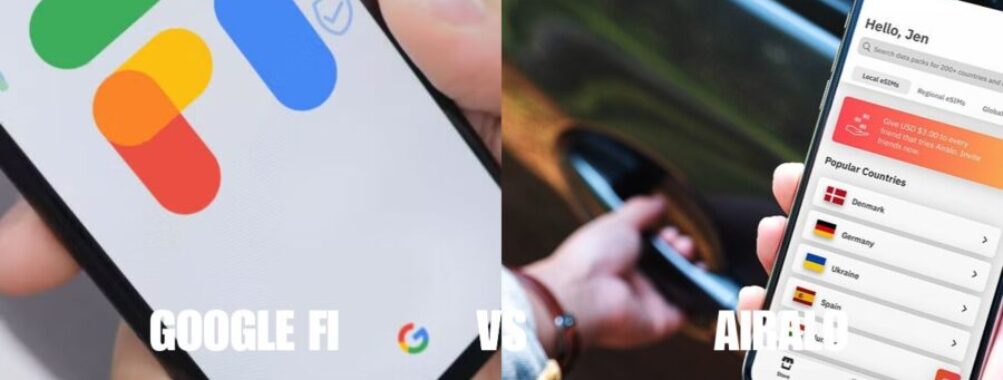
Google Fi vs Airalo: The Ultimate Guide for Smart Travelers in 2025
Traveling abroad is thrilling, but honestly, staying connected without blowing your budget? That’s a puzzle. You’ve probably heard of Google Fi and Airalo—both are big names for international data.
If you want calls, texts, and data bundled together, Google Fi usually takes the cake. But if you just need affordable data across several countries, Airalo often comes out ahead.
I’ve tried both on trips from Mexico to Japan, and honestly, it all depends on your travel style. If you’re country-hopping and just want cheap, fast data, Airalo’s eSIMs are a breeze to set up and super affordable.
But if you want one number, reliable service, and little extras like spam protection, Google Fi acts more like your everyday carrier. There’s more to this, though—stuff like pricing, coverage quirks, and those small perks that can totally change your trip.
Once you get a feel for the trade-offs, you’ll know which one fits your travel style.
Table of Contents
- Key Takeaways
- Key Differences Between Google Fi and Airalo
- How Each Service Works
- Who Should Use Each Option
- Unique Features Comparison
- Pricing and Data Plan Structures
- Google Fi Plan Options and Costs
- Airalo Data Plans and Pricing
- Family and Group Plans
- Network Coverage and Performance
- United States Coverage
- International Data Availability
- Speed and Reliability
- Device Compatibility and Setup
- Supported Devices for Google Fi
- Supported Devices for Airalo
- eSIM Activation Process
- International Travel Experience
- Ease of Use Abroad
- Regional and Global Plan Options
- Support for Frequent Travelers
- Extra Features and Value-Added Services
- Voice and Text Capabilities
- Integration with Google Services
- Customer Support Comparison
- Frequently Asked Questions
- What are the key differences in international coverage between Google Fi and Airalo?
- How does the data speed and reliability compare when using Google Fi’s eSIM versus Airalo’s eSIM services?
- What are the pros and cons of using Holafly versus Google Fi for frequent travelers?
- Book Your Dream Experience
- More Travel Guides
Key Takeaways
- Google Fi works best if you need calls, texts, and data in one plan
- Airalo is ideal for affordable, flexible data in many countries
- Choosing depends on travel style, budget, and connectivity needs
Key Differences Between Google Fi and Airalo

Choosing between Google Fi and Airalo really comes down to how you travel, how you use your phone, and what you’ll pay for convenience. One’s built like a traditional phone service (but with a global twist), while the other is a flexible, data-first tool that just slides into your trip with barely any effort.
How Each Service Works
Google Fi is a mobile virtual network operator (MVNO) that uses T-Mobile, Sprint, and U.S. Cellular in the U.S., then hops onto partner networks overseas. You get a regular number, calls, texts, and data—all on one bill.
Airalo? Totally different beast. It’s an eSIM marketplace where you buy prepaid data packages for a country or region. No physical SIM, no phone number—just data.
If you’re in the U.S., Google Fi feels like a regular carrier that happens to roam globally. Airalo is more like a travel add-on you fire up when you land somewhere new.
I’ve used both—Google Fi for a long stretch in Mexico, Airalo for a quick Japan hop. Fi felt seamless, but Airalo was lighter on my wallet and faster to get going.
Who Should Use Each Option
If you need calls and texts along with data, especially in the U.S., Canada, or Mexico, Google Fi is your safer bet. It’s also handy for families since the price drops as you add more people.
Airalo makes sense if you just want data and don’t mind calling with WhatsApp or FaceTime. It’s especially great for short trips or if you’re bouncing between several countries.
For example, a 5GB Airalo plan for Brazil might cost way less than Fi’s roaming rates. But if you’re sticking around one country for a while and need a local number, Fi is just easier.
Ask yourself—are you staying long-term or just passing through? One country or ten? Do you need old-school calling, or are you cool with apps?
Unique Features Comparison
Google Fi
- Includes calls, texts, and data in one plan
- Free VPN and spam call protection
- Integrates with Google services like Google One storage
- Regional plan for Mexico and Canada
Airalo
- Data-only eSIMs for 84+ countries
- Flexible validity (7 to 365 days)
- Regional bundles (e.g., Europe, Asia, Latin America)
- No contracts or monthly commitments
One thing I love about Airalo—you can stack eSIMs. I’ve had a Europe plan running and added a separate UK plan for more data. With Fi, you’re stuck to a monthly cycle, which feels like overkill for a weekend getaway.
If you just want to land, scan a QR code, and be online in two minutes, Airalo nails it. If you want your phone to “just work” everywhere and never swap a thing, Fi’s got the edge.
Pricing and Data Plan Structures
If you’re weighing Google Fi versus Airalo, the biggest factor is how they charge for data and what you actually get. The way each prices its plans can make one way more appealing depending on where you’re headed and if you need calls and texts or just data.
Google Fi Plan Options and Costs
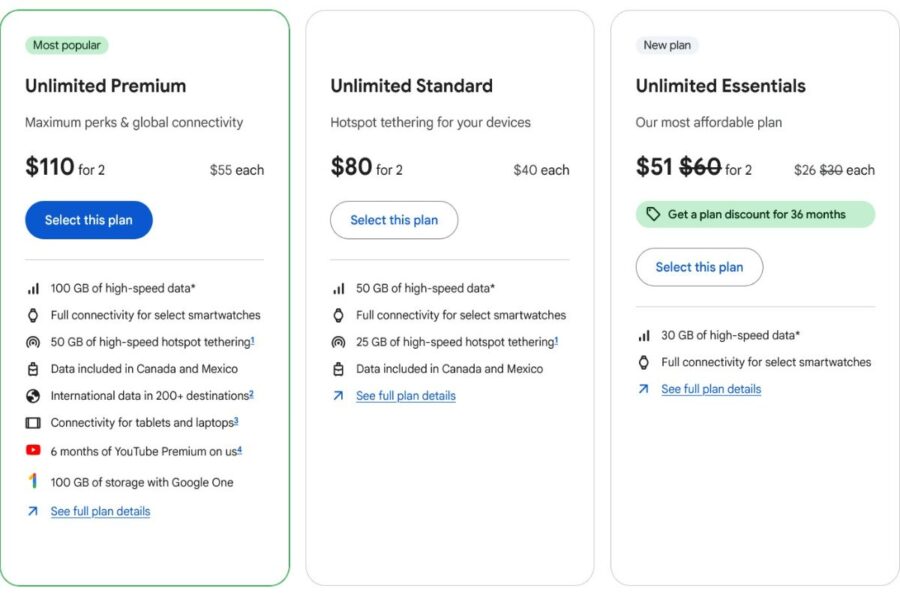
Google Fi keeps it simple with three main plans: Flexible, Simply Unlimited, and Unlimited Plus.
The Flexible plan is $20/month for unlimited calls and texts, plus $10 per GB of data. You only pay for what you use, which is nice if you’re not a heavy data user.
Simply Unlimited is $50/month for unlimited calls, texts, and data in the U.S., Canada, and Mexico. Unlimited Plus is $65/month and adds international data in 200+ destinations at no extra charge.
Heads up—speeds slow down after 35 GB on unlimited plans. Fi works in a ton of countries, but you’ll get the best value if you spend lots of time in North America or want a plan that’s also your main phone service. You can dig into the details at NetworkBuildz’s Google Fi comparison.
Airalo Data Plans and Pricing

Airalo is a whole different ballgame. Instead of a monthly plan, you buy local, regional, or global eSIMs with a set data amount and validity.
Maybe it’s a 3 GB / 30-day plan for France, or a 5 GB / 15-day regional plan for Europe. Prices jump around—a single-country plan might be under $10, while a global eSIM for 80+ countries could run $30–$90 depending on data.
No recurring bill unless you top up or buy again. Most Airalo eSIMs don’t include calls or texts (a few global ones toss in SMS), so it’s really for data-first travelers. If you’re using WhatsApp or FaceTime anyway, this can save a ton. More details are in this Airalo vs Google Fi guide.
Family and Group Plans
If you’re traveling with family or a group, Google Fi is honestly easier. You can add up to six people to one account, and the per-person price drops as you add more. The Flexible plan’s base cost per person goes down when shared, which can sometimes beat buying everyone their own data plan.
Airalo doesn’t do “shared” plans. Each person needs their own eSIM, so you’re making separate purchases and tracking separate data. That’s fine for a quick trip, but if you’re wrangling devices for kids or coworkers, it gets annoying fast.
I’ve traveled with friends where we each grabbed our own Airalo plan. It worked, but everyone had to track their own data. With Fi, you can see group usage in one spot, which is just easier when you’re running around airports and train stations.
Network Coverage and Performance
When you’re picking between Google Fi and Airalo, the big question is where and how you’ll use your phone. Coverage varies wildly depending on location, and a bad connection can wreck your travel experience.
United States Coverage
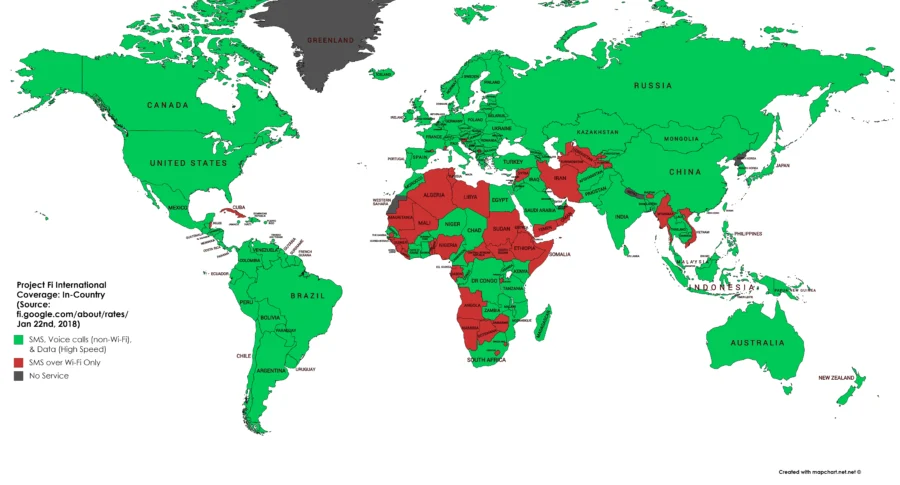
If you spend most of your time in the U.S., Google Fi is tough to beat. It runs on T-Mobile, Sprint, and U.S. Cellular, switching between them automatically. You get 5G in lots of cities and solid LTE in the sticks.
Airalo doesn’t have its own U.S. network. It partners with local carriers through its eSIMs, so your experience depends on what plan you buy. Some U.S. Airalo plans use T-Mobile too, so speeds and coverage are decent, but you won’t get Fi’s seamless network juggling.
If you’re driving cross-country or through remote spots, Fi’s multi-network setup is a lifesaver. I’ve driven through Montana where my Airalo eSIM gave up, but Fi kept me connected by switching to U.S. Cellular. That’s peace of mind you can’t put a price on.
International Data Availability
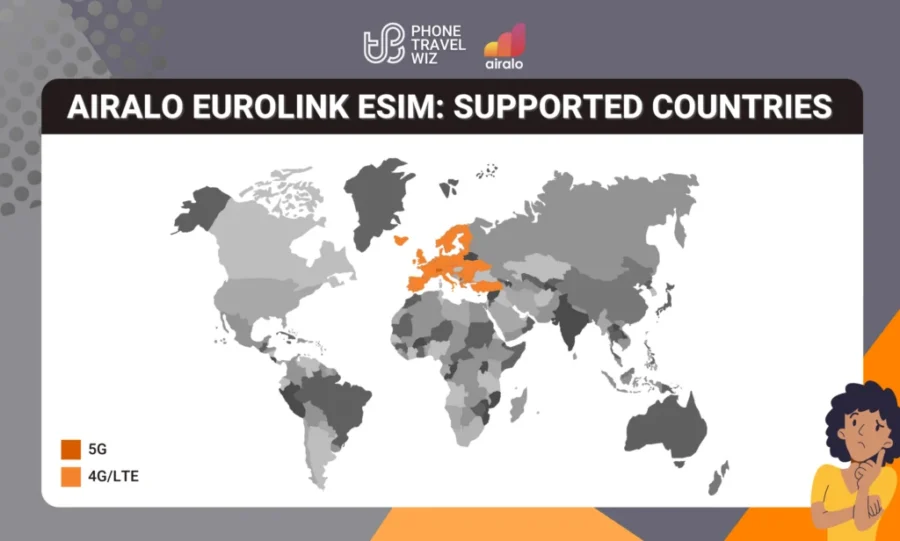
For international trips, Airalo shines with its global eSIM and country-specific plans. You can buy data for 80+ countries, often for way less than roaming would cost. Just pick your country or region, download the eSIM, and you’re good.
Google Fi covers international data in 200+ destinations, but it really shines if you’re bouncing between the U.S., Canada, and Mexico. Outside those, you still get data, but calls and texts can get pricey.
If you’re hopping between countries in Europe or Asia, Airalo’s regional plans are usually more flexible and cheaper. But if you want one plan that just works everywhere and you still need voice calls, Fi is way more convenient.
Speed and Reliability
Speed depends on the local network you’re on. Fi uses partner networks abroad, so sometimes you’ll get 4G or 5G, sometimes you’ll drop to 3G. In the U.S., Fi’s access to multiple carriers usually means faster, more reliable connections.
Airalo’s speeds jump around more since it depends on whichever local carrier your eSIM uses. In big cities, I’ve streamed video just fine, but in rural areas, things can crawl.
If you work remotely while traveling, Fi’s consistency in supported regions is a lifesaver. But if you’re mostly browsing, messaging, and using maps, Airalo’s good enough—and usually cheaper.
Want a deep dive on coverage and connectivity? Check the breakdown at NetworkBuildz’s Airalo vs Google Fi guide.
Device Compatibility and Setup
If you’ve ever landed in a new country and your phone just won’t connect, you know that pain. The way Google Fi and Airalo handle device compatibility and eSIM setup can totally change your trip—especially if you depend on your phone for maps, bookings, and keeping in touch.
Supported Devices for Google Fi

Google Fi really shines with Pixel phones. They’re built to handle Fi’s carrier switching magic. You’ll get calls, texts, and data working right out of the box—no weird settings to mess with.
You can still use Fi on a bunch of Androids and iPhones. Some features, like Wi‑Fi calling or seamless switching, might not work perfectly though. I once popped a Fi SIM into my Samsung Galaxy S21—data was fine, but texts lagged when I roamed.
Google’s got a handy compatibility checker to see if your device will play nice. Definitely worth a look, especially if you’re dragging an older phone along for the ride.
Supported Devices for Airalo
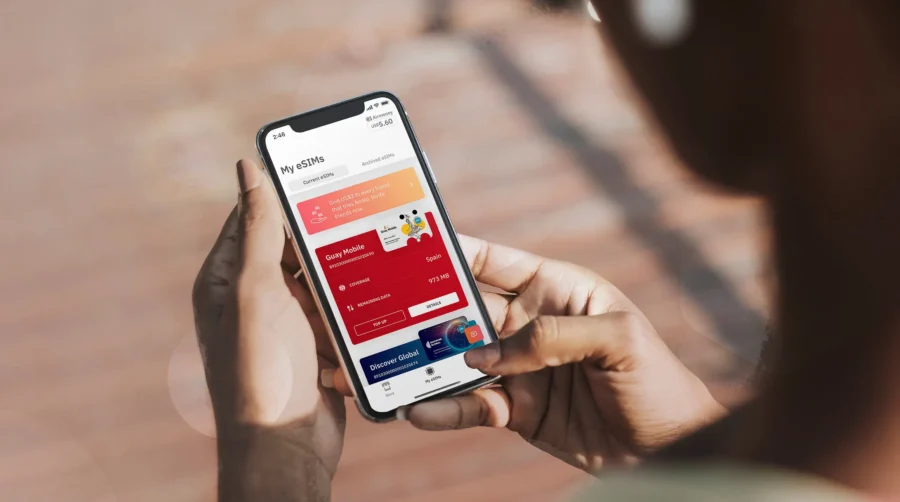
Airalo’s a bit more chill—it works with any eSIM‑compatible device. Think newer iPhones (XS and up), lots of Samsung Galaxies, recent Pixels, and even some iPads.
Most Airalo plans are data‑only, so you won’t stress about voice or SMS. Just call with WhatsApp or Skype. I’ve run Airalo on a cheap Android I grabbed in Thailand—if it had eSIM, it worked, no drama.
If you’re not sure, check Airalo’s site or peek in your phone’s settings under “Cellular” or “Mobile Data” for eSIM support.
eSIM Activation Process
Setting up eSIM with Google Fi is honestly a breeze—if your phone’s supported. Sign in, follow the prompts, and your eSIM profile just shows up. On Pixels, it’s almost instant. I once activated Fi in an airport lounge while waiting to board.
Airalo’s process is a little different. Buy a plan in their app, scan a QR code, and install the eSIM profile. Sometimes you’ll need to mess with APN settings, especially on Androids. Not hard, but it can be a bit fiddly.
Pro tip: always download and install your eSIM over Wi‑Fi before you travel. Airport Wi‑Fi is notoriously sketchy, and you really don’t want to be scanning QR codes while juggling bags and boarding passes.
International Travel Experience

If you’ve ever tried swapping SIM cards in an airplane seat or at a chaotic airport kiosk, you know how much of a pain staying connected abroad can be. Picking the right eSIM saves you hassle, cash, and honestly, a chunk of your sanity—especially if you’re country-hopping.
Ease of Use Abroad
Google Fi lets you land in a new country and usually connects your phone within minutes. No kiosk hunting. No SIM tray acrobatics. If you’ve set it up at home, it just works the same overseas.
Airalo is all about flexibility. Buy a country or region eSIM in the app, scan the QR, and you’re set. I’ve done this while waiting for my luggage in Bangkok—took maybe three minutes, tops.
One thing to keep in mind: Airalo’s data-only plans mean you’ll need WhatsApp or something similar for calls and texts. Unless you get their global eSIM that includes messaging. Google Fi gives you native calls and SMS in supported countries, which can be a lifesaver if you need to ring a local taxi company that doesn’t use chat apps.
Regional and Global Plan Options
Google Fi nails it in North America. If you’re bouncing between the U.S., Canada, and Mexico, the plan is dead simple—unlimited calls, texts, and data for a flat rate. Outside that, coverage is still solid in lots of places, but the price climbs.
Airalo’s got a massive menu. Grab a regional pass for Europe, Asia, or the Caribbean, or go all-in with a global eSIM that works in 80+ countries. I’ve used their Asia plan for a two-week trip through Thailand, Vietnam, and Japan—never had to swap plans.
Here’s a quick peek:
| Provider | Regional Plans | Global Option | Calls/SMS Included |
|---|---|---|---|
| Google Fi | N. America | No | Yes |
| Airalo | Multiple | Yes | Only on Global eSIM |
Support for Frequent Travelers
If you’re on the road more than you’re home, you want a plan that doesn’t nag you about “primary use.” Google Fi can suspend your account if you’re abroad too long without U.S. usage—that’s a deal-breaker for some nomads, honestly.
Airalo doesn’t care where you live—just buy data as you need it. That freedom is a win for long-term travelers or anyone country-hopping. I’ve topped up my Airalo plan from a hostel lobby in Lisbon, no problem.
If you love extras like spam call blocking, VPN, and Google perks, Google Fi does have the edge. But for pure international data flexibility, Airalo often wins out in my book.
Extra Features and Value-Added Services
Choosing between Google Fi and Airalo isn’t just about who’s cheapest on data. The little things—how you make calls, if your plan works with your other tools, and whether support is actually helpful—can totally change your travel vibe.
Voice and Text Capabilities
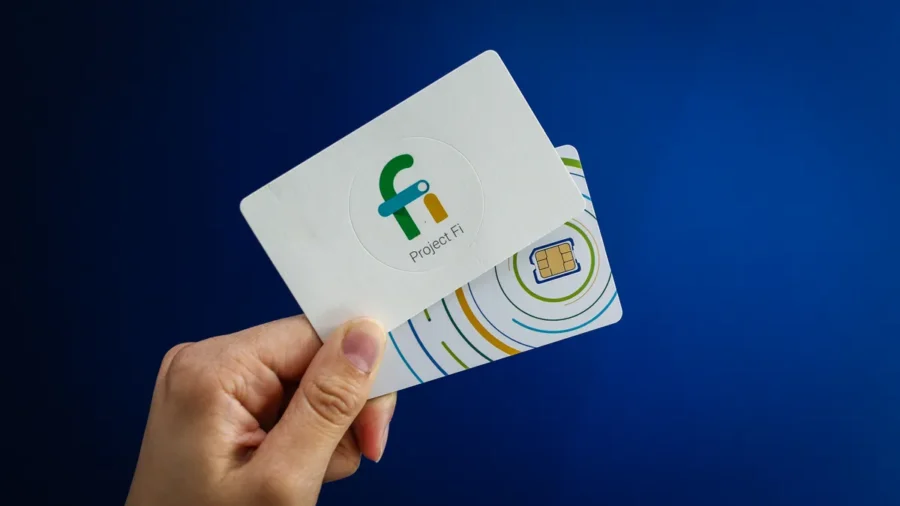
If you need to call or text regularly while abroad, Google Fi’s got a clear edge. You get unlimited domestic calls and texts in the U.S., plus international texting for free. Wi‑Fi calling is a game changer in places with weak cell service.
Airalo’s mostly data. Most eSIMs don’t do voice or SMS. Their Global eSIM supports SMS, but it’s still limited. If you’re glued to WhatsApp or Signal, you probably won’t care. But if you need a real phone number for work or bookings, Airalo just isn’t it.
I’ve been stuck in rural Japan with no local SIM, and Google Fi’s Wi‑Fi calling saved my hotel check-in. You don’t realize how useful that is until you’re in the middle of nowhere.
Integration with Google Services
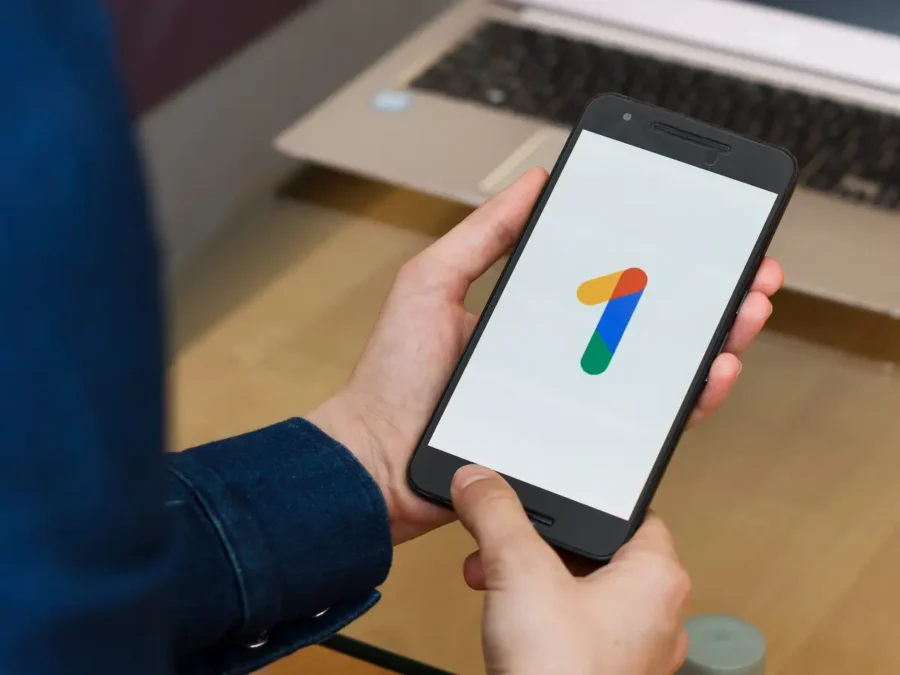
Google Fi’s big perk? It slots right into other Google stuff. Bundle with Google One storage, use Google Play Pass, get built‑in spam call protection. If you’re deep in the Google ecosystem, it just feels right.
Airalo doesn’t really do integration. It’s a standalone eSIM shop, and that’s fine if you like to keep things separate. But don’t expect fancy cross-platform tricks.
With Fi, your number syncs across all devices on your Google account. I’ve answered calls from my laptop while my phone’s charging in the other room. It’s a small thing, but super handy.
Customer Support Comparison
Support—you hope you never need it, but when you do, it matters. Google Fi offers 24/7 support via chat, phone, and email. I’ve had chat replies in minutes, even at weird hours.
Airalo handles support through in-app tickets and email. They’re polite, but replies can take a few hours, sometimes longer if you’re on the other side of the world. Not ideal if your data dies right before a flight.
Little tip: with Airalo, I get quicker help if I message them early in their day. With Google Fi, someone’s always around, which is a relief when you’re halfway across the globe and something breaks.
Frequently Asked Questions
When you’re picking an eSIM, the real differences come down to where you’re headed, how you use your phone, and whether you care more about calls or just data. Prices, speed, and coverage shift a lot depending on the country and which networks each provider uses.
What are the key differences in international coverage between Google Fi and Airalo?
If you’re often in the U.S., Canada, or Mexico, Google Fi’s a winner. It uses major U.S. carriers and extends coverage up north and south—no drama. It’s more like a “phone plan that travels with you.”
Airalo sells country-specific or regional eSIMs for 200+ places. Land in Japan? Just grab a short-term plan for the trip. Usually cheaper than Fi abroad, but unless you get one of their global eSIM options, don’t expect bundled calls and texts.
Honestly, if you’re hopping around Southeast Asia, Airalo’s flexibility is awesome. But if you’re sticking to North America, Fi’s simplicity is tough to beat.
How does the data speed and reliability compare when using Google Fi’s eSIM versus Airalo’s eSIM services?
Google Fi taps into multiple U.S. networks (T-Mobile, U.S. Cellular), so speeds are usually solid in cities. Abroad, it roams on partner networks, which can be a mixed bag depending on where you are.
Airalo works with local carriers in each country. If you’re somewhere with good 4G or 5G, you usually get the full speed. But I’ve noticed in rural areas, the signal can drop faster than with Fi’s roaming.
If you need reliable video calls on the road, Fi might feel steadier in some places. For basic browsing and maps, Airalo’s local tie-ins often give you a nice speed boost.
What are the pros and cons of using Holafly versus Google Fi for frequent travelers?
Holafly’s a favorite among travelers who crave unlimited data in a bunch of countries. There’s a catch, though—it’s usually data-only, and after you burn through a lot, they’ll throttle your speeds.
If you’re glued to WhatsApp or Messenger for calls, honestly, that’s probably not a dealbreaker. But if you’re hoping for traditional calling, you might feel a little limited.
Google Fi, on the other hand, wraps calls, texts, and data into one tidy plan. If you’re country-hopping every week, not having to buy a new plan each time is a real relief.
It does tend to cost more than Holafly if you chew through a ton of data abroad. I’ll admit, the price tag can sting a bit.
I’ve grabbed Holafly for those quick work trips when I just needed to upload a bunch of photos and didn’t care about a local number. For longer stays, though, I really appreciate Fi’s all-in-one approach—no SIM swapping, no fuss.



